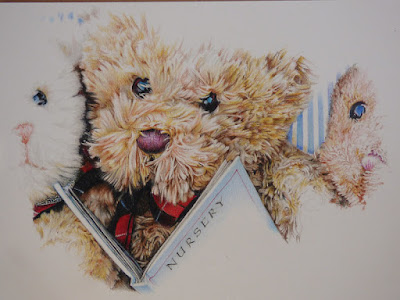"Once upon a time..." One of the best ways to help your child deal with issues that arise on a day-to-day basis is to address them by telling stories through children's books, storytelling, puppet shows, finger puppets, and or felt storyboards.
Each story needs to have these three elements: the characters in the story are similar to the people in your family, the story has a conflict (the issue), and it ends with a "life lesson."
Let's take the issue of having a child who is a perfectionist (my director was one of these types!). There are pros and cons or drawbacks. One pro is the beautiful work that they do or art that they make (and perhaps it is the perfectionist who becomes a brain surgeon?!). One common drawback is how upset the child gets when they make a mistake, or when their project does not come out perfectly.
Your goal with telling a story is to help your child deal with drawbacks and offer an alternative (to getting so frustrated).
We used this storytelling method of dealing with issues at puppet showtime. The teacher would choose an issue of the day, so to speak, like a child coming to school and crying when the mom left (a common issue in preschool). And she would resolve the issue in the puppet show. "When the little girl came to school she said goodbye to her mommy and went to get the crayons and drew a picture for her mommy to make her feel better. She knew she would have fun at school and that it was OK to miss her mommy because she loved her so much."
At home, it is usually bedtime when stories are read. This is an ideal time for you to make up your own issue-solving story. You can use two puppets to tell the story, a felt storyboard, or just use your own voice.
For more story ideas, check out the book: Healing Stories for Challenging Behaviour on Goodreads. "Healing Stories for Challenging Behaviour brings together the fruits of Susan Perrow's work in storymaking. It is richly illustrated with lively anecdotes drawn from parents and teachers who have discovered how the power of story can help resolve a range of common childhood behaviours and situations such as separation anxiety, bullying, sibling rivalry, nightmares and grieving." ~Lisa Nolan
on Goodreads. "Healing Stories for Challenging Behaviour brings together the fruits of Susan Perrow's work in storymaking. It is richly illustrated with lively anecdotes drawn from parents and teachers who have discovered how the power of story can help resolve a range of common childhood behaviours and situations such as separation anxiety, bullying, sibling rivalry, nightmares and grieving." ~Lisa Nolan

